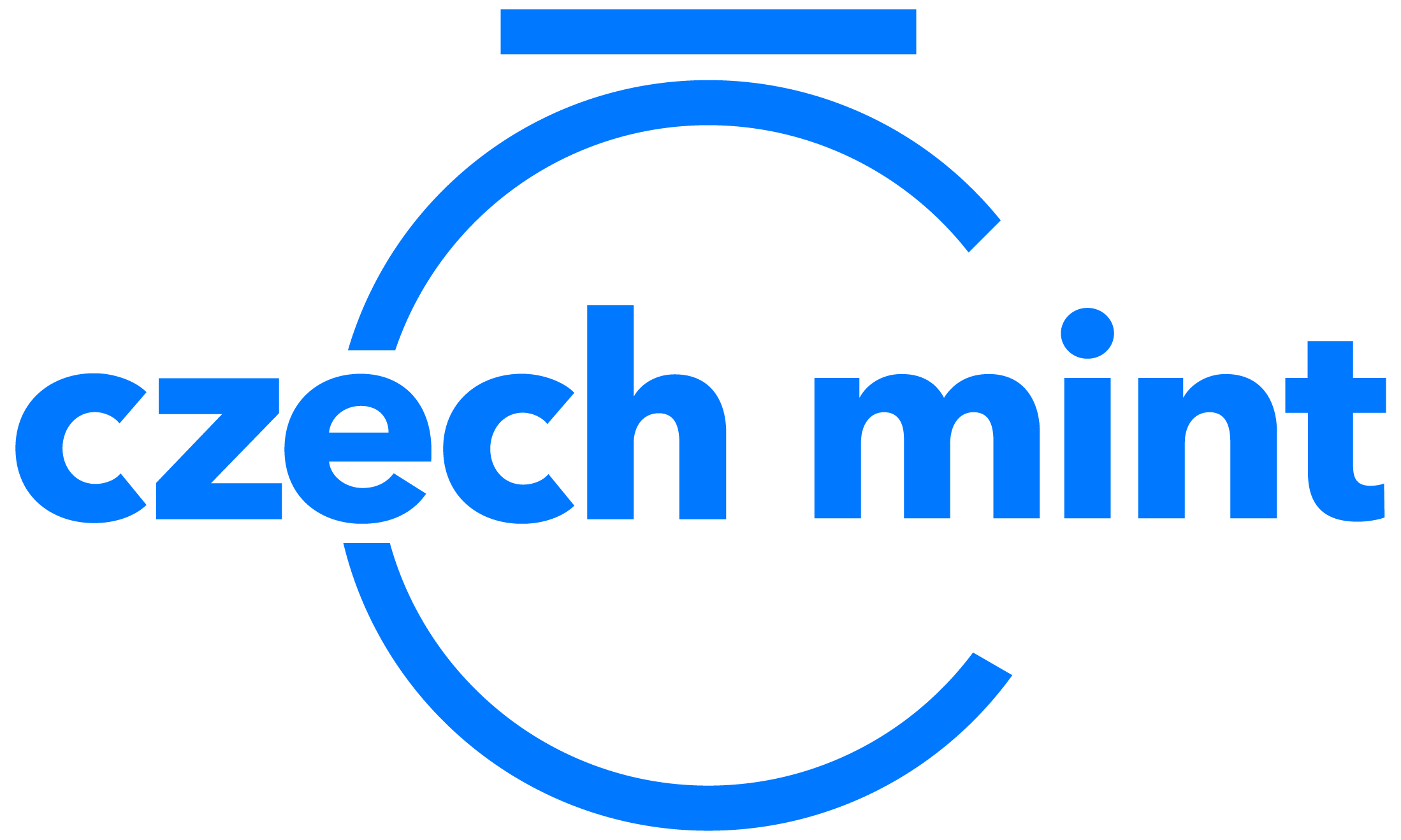Minting is a field with a rich history and a specific glossary:
Coin – The coins represent the legal currency of the state. They are divided into circulation, commemorative and investment. They are issued by an authority designated by law, usually the central bank. Their necessary elements include the nominal value, the year of issue and the coat of arms or the name of country.
Medal – Most people think of military decorations or sports awards. Commemorative medals, however, are indistinguishable from coins at first glance. They differ in the absence of a nominal value and therefore, they are not legal tender. They are usually issued by private entities.
Ingot – Investment ingots exist in two basic forms, which are cast bricks and embossed small plates. Each ingot bears the manufacturer's brand, weight, purity of metal and a unique serial number.
Issuer – The issuer is the authority that issues coins or medals. The publisher is not usually the same as the manufacturer. For example, Czech coins are minted by the Czech Mint, but they are issued by the Czech National Bank.
Au – Chemical brand of gold based on the Latin word aurum.
Ag – Chemical brand of silver based on the Latin word argentum.
Purity – Purity expresses the relative weight of the precious metal in the alloy. In the case of coins, medals and ingots, it is given in thousands. The designation 999.9 or 999.9 / 1000 belongs to pure gold with a minimum of impurities. An ingot weighing 1000 grams then contains 999.9 grams of gold and only 0.1 grams of other elements. Purity can also be expressed in carats (pure gold has 24 of them), but they are used as a unit mainly in jewellery trade. Pure silver is referred to as 999 or 999/1000, i.e. it contains 999 parts of precious metal and only 1 part of impurities.
Troy ounce / oz – A troy ounce is a unit of weight used on world stock exchanges with precious metals. It was not named according to the legendary city of Troy, but according to the French city of Troyes [trua]. This seat on the river Seine has been a center of trade since time immemorial, and gold and silver in units corresponding to the troy ounce have been exchanged here since the Middle Ages. 1 oz represents 31.1 g of precious metal. Proportions or multiples of a troy ounce are also commonly used.
Standard / normal quality - The minting of such marked coins or medals is carried out using standard stamping dies and their entire surface is matte.
Proof / top quality - The minting of such marked coins or medals is carried out using special polished stamping dies. The resulting product has a mirror-gloss surface and a matte relief. This effect is usually reflected as a dark reflection in product photos.
Reverse proof – Variations of quality proof. The surface of such coins or medals is matte and the protruding relief is characterized by a mirror gloss.
Schedule of issuance – The maximum number of coins or medals that will be issued. Reputable companies strictly limit and do not exceed the schedule of issuance.
Like the human body, coins have their own anatomy:
Obverse / obverse side – Front. It bears the emblem or name of the state. For example, on the obverse side of all Czech circulation coins there is the Czech lion.
Reverse / reverse side – Back.
Nominal value – Regarding circulation coins, the nominal value is the exact equivalent of what you buy for them. In the case of commemorative and investment coins, it represents the basic value that the coin owner will receive if he or she requests its exchange with the central bank, which guarantees the repurchase of the coins. The selling price of commemorative and investment coins is higher than nominal value with regard to the material used and processing.
Surface – The flat surface from which the details of the coin protrude.
Relief – A motif that protrudes from the coin surface.
National emblem – Symbol of the country that issued the coin.
Inscription – Text that is placed around the circumference of the coin.
Text – Text that is located elsewhere than around the circumference of the coin.
Mint mark - The signature of the mint that minted the coin. You may be wondering why the mark on Czech circulation coins takes the form of the letter "b". The answer is simple. The Czech Mint was originally established as part of the company Bižuterie in Jablonec nad Nisou, and the letter „b“ remained even after it became independent. When Czechoslovakia was split into the Czech Republic and Slovakia in 1993, the Czech Mint was just being established, the first Czech coins were produced by mints in Hamburg, Germany, and Winnipeg, Canada. Have a look into your pocket if you have one such "Canadian" coin from 1993. Instead of a „b“, you will find there a mark in the form of a maple leaf.
Author mark – Signature of the author or medal maker who created the coin.
Year of issue – The year in which the coin was issued.
Edge – The shell that forms the circumference of the coin.
Frame – An edge that protrudes from the coin surface.
 čeština
čeština
 slovenčina
slovenčina
 english
english
